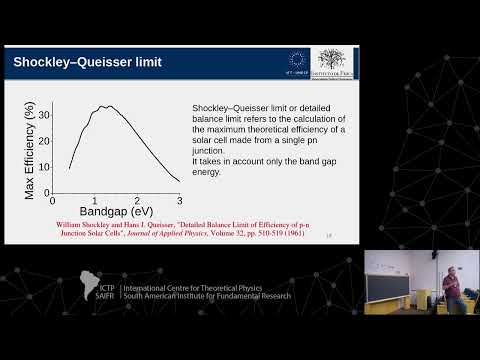Description:
Save Big on Coursera Plus. 7,000+ courses at $160 off. Limited Time Only!
Grab it
Explore the potential of 2D materials for photovoltaic energy harvesting in this 30-minute conference talk by Pedro Venezuela from UFF. Delve into semiconductors for PV, focusing on 2D materials and transition metal dichalcogenides (TMDCs) for photovoltaic applications. Examine the role of excitons in 2D semiconductors, comparing few-layer and bulk structures. Learn about the spectroscopic limited maximum efficiency (SLME) and computational parameters used in research. Investigate crystal structures, quasiparticle band structures, and band gaps. Understand GW and BSE gaps, exciton binding energy, and spin-orbit coupling effects. Gain insights into BSE optical absorption and draw conclusions on the future of 2D materials in photovoltaic energy harvesting.

2D Materials for Photovoltaic Energy Harvesting
Add to list
#Science
#Materials Science
#2D Materials
#Engineering
#Electrical Engineering
#Semiconductors
#Energy Systems
#Renewable Energy
#Energy Harvesting
#Solar Energy
#Photovoltaics
#Physics
#Quantum Mechanics
#Quantum Physics
#Excitons
#Transition Metal Dichalcogenides